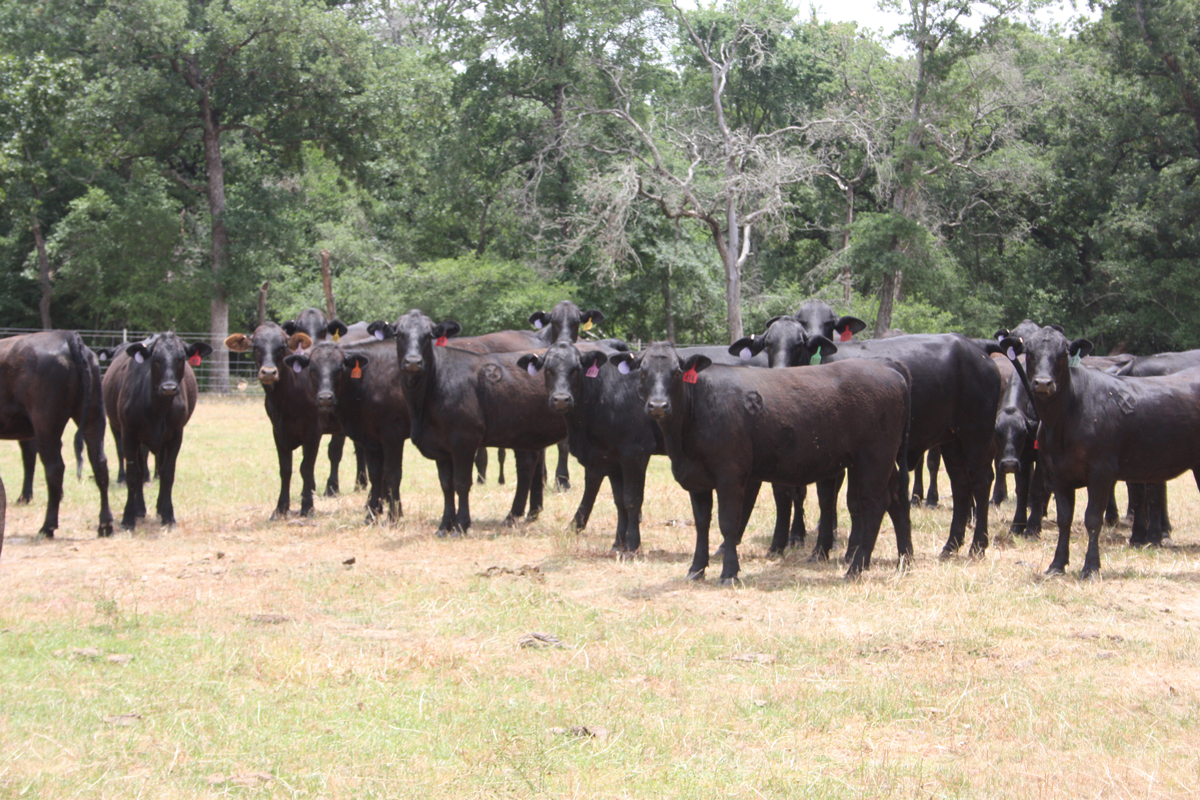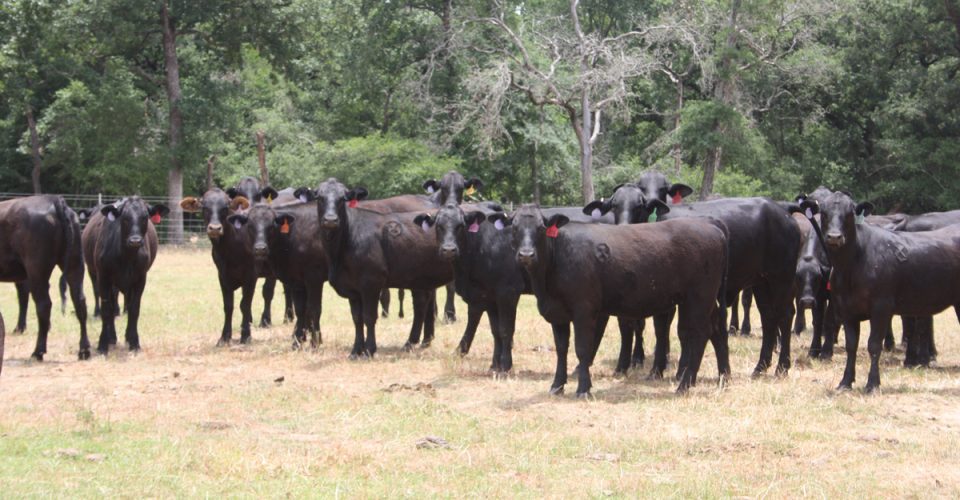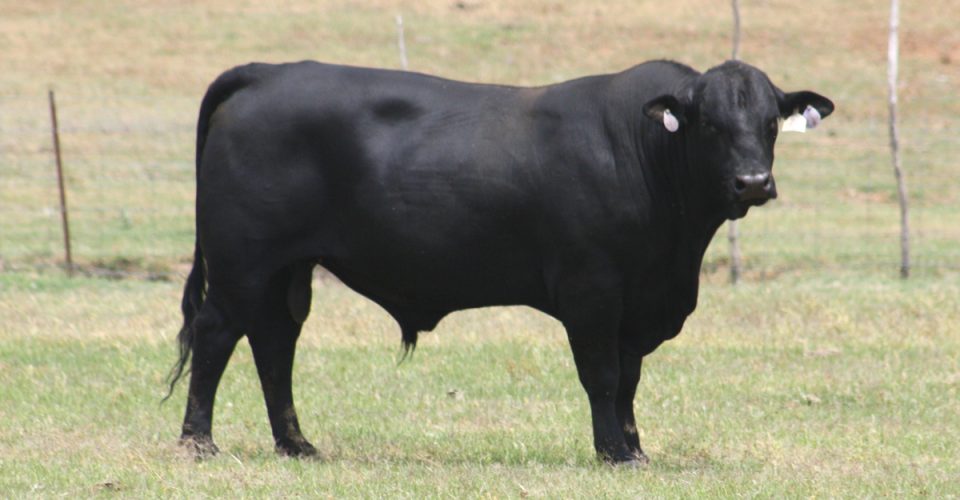Consider a Breeding Soundness Exam for Your Heifers

Breeding soundness exams aren’t just for bulls, says Dr. John Davidson. Picking the right heifers can start them off on a long, productive life in your beef herd.
By Ellen H. Brisendine
“Pounds of calf weaned per female exposed is the miles per gallon of your cattle enterprise,” says Dr. John Davidson, senior associate director of beef cattle professional services for Boehringer Ingelheim.
Davidson has spoken about beef cow reproductive health, and other related topics, at the annual Cattle Raisers Convention and at other beef industry meetings. His talks cover a wide range of cow and bull health issues. For this article, we’ll focus on the reproductive health of the heifers and cows in the beef herd.
“You know how many females you expose to a bull and you know how many pounds of calf you weaned and took to market. That’s really all you need to calculate that number,” he says. Alluding to the well-known saying regarding management — you can’t manage what you don’t measure — Davidson encourages ranchers to divide the total pounds of weaned calves they sell in a year by the number of females that were exposed to the bull or bulls.
“Write this number on a 3 x 5 notecard and stick it on the fridge,” he says. The next year, do the same calculation and compare the numbers.
This simple tracking will help the rancher decide if it’s time to make some changes in the herd health program to get a better number the next year.
Breeding soundness exams for the bulls… and for the females
Davidson encourages ranchers to have a veterinarian conduct a bull breeding soundness exam (BBSE) on every bull — the new bulls and the ones already on the ranch.
“The breeding soundness opportunity extends to the female, too,” he says. “At around 12 to 14 months of age, a heifer should get also be evaluated for reproductive soundness.” Davidson says that a veterinarian can palpate the heifers and assign a reproductive tract score (RTS) on a standardized scale of 1 to 5 based on her sexual maturity.
“Ranchers have a lot of criteria they use to determine why they keep one heifer over another. It might be her temperament, a genetic component or the results of an ultrasound measurement to determine ribeye area. If we’re not also incorporating sexual maturity in our selection and retainment criteria, then we’re missing the mark.”
Heifers that are sexually immature or that have a problem with their reproductive tract at 12 to 14 months of age should be culled, he says.
If the heifers aren’t evaluated for breeding soundness before breeding season, the only way to detect a problem with her is when she comes up open at pregnancy-check time or doesn’t have a calf by the end of calving season. By then, the heifer has consumed ranch resources that could have gone to a more productive female.
“To me, this is the single most important item that’s missing from the majority of cow-calf operations — the reproductive tract score of the yearling heifer. You want to keep heifers with reproductive tract scores of 3, 4 or 5. Ship those with scores of 1 or 2,” he advises.
The added productivity of the herd will pay for the cost of the test, he says.
Davidson cites University of Nebraska and South Dakota State University studies that tracked the productivity of heifers that were evaluated for sexual maturity. The UN-L study looked at over 16,000 heifers over a 10-year period, tracking when in the calving season they had their first calf. The study demonstrated the advantage of heifers calving in the first 21 days versus later in the calving season.
“Heifers that had their first calf in the first 21 days of the calving season had a longevity of 8.2 years over that 10-year study. Heifers that calved in the second 21-day period of the calving season had a longevity of 7.2 years.”
He says the study results showed the calves born in the first 21 days were heavier than the calves born in either the second 21-day period or in the third 21-day period of the calving season.
“Lifetime production of that female is dependent on her first record. Which set of heifers would you rather have? You want the ones that got pregnant on the first service. You’re going to get more first-service pregnancies if you have properly performed breeding soundness exams on the bull and are also using sexual maturity as a key criterion for your replacement heifers,” he says.
Reproductive pathogens
Keeping the best producers in top production shape means keeping the bulls and females healthy.
Davidson tells ranchers to not let the name of a common viral disease fool them. Bovine viral diarrhea (BVD) “has a much more significant impact from a respiratory and a reproductive disease standpoint,” he says.
Pregnant females that are exposed to BVD up to 125 days of gestation are likely to deliver a calf that is persistently infected with BVD (BVD PI), which means that the BVD virus will be shed during its entire life.
Davidson explains, “Sometime at around 4 months to 5 months into gestation, the fetal calf’s immune system begins to function. If that fetus is exposed to the BVD virus in utero before the immune system is developed, then the fetus’ body recognizes that virus as part of itself and it tolerates the viral infection. That calf’s body will never do anything to clear that viral infection throughout its life. This means that the calf will shed BVD virus every day of its life until it dies.”
“If the pregnancy is not lost with an abortion due to BVD, then the BVD-PI calf will shed the BVD virus in bodily secretions such as nasal discharges, saliva, urine and feces,” Davidson says.
While BVD-PI calves typically don’t exhibit clinical signs, there is so much of the virus in these PI calves that the common test to determine BVD-PI status is a skin sample (ear notch).
“We have vaccines in the marketplace that will prevent that from happening. They have claims for fetal protection, known as FP, on the label,” he says.
“When they go into that cow or heifer pre-breeding and she has antibodies in her system that prevent the virus from ever getting to the fetus, then this phenomenon never happens,” he says.
A good time to administer a modified-live viral vaccine with a fetal protection claim, Davidson says, is when the veterinarian is conducting breeding soundness exams on the heifers. Vaccinate the heifers that pass your reproductive tract criteria. “You will protect her future calf from ever becoming a BVD-PI calf,” he explains.
Researchers estimate about 10 percent of beef herds have at least one BVD-PI animal, he says.
The risk of adding a BVD-PI calf to your herd increases if the new calves are of unknown origin and if the rancher is not testing when the cattle are being acquired.
Protozoa and bacteria pathogens affecting reproduction
Other common cattle illnesses that affect reproduction are caused by the protozoa Tritrichomonas foetus, which causes trichomoniasis, or trich, and by the bacteria Lepto and Vibrio.
“Trich and vibrio present a very similar clinical picture — early embryonic death before day 45, or early abortions after day 45 through the first trimester of pregnancy,” Davidson says.
Lepto causes late-term abortion in exposed cattle. It is a zoonotic disease, meaning humans exposed to Lepto can contract the disease. Lepto pomona causes the classic late-term abortion storm.
The bovine species is a carrier or maintenance host for Lepto hardjo-bovis. “When an animal is the maintenance host for a disease process, they do not mount a strong immune response. It is a contributor to reproductive losses and affects the whole spectrum of pregnancy, everything from early embryonic death, low pregnancy rates, abortions, stillborn calves, and even poor doers.”
Vibrio is a venereal disease in cattle that can be effectively controlled with vaccination. “Be sophisticated enough in your health program that steers and heifers going to the feedlot don’t get a dose of Vibrio vaccine. We don’t need to vaccinate for a venereal disease in a feeder animal. Save the resources of the immune response for the true threats in that class and type of cattle.
For a rancher in the southern U.S., there’s not another disease that comes close the economic significance of the venereal disease trichomoniasis, Davidson says.
He cites a study of what happened when a 3-year-old bull was put in a pasture with 20 virgin heifers. After a single breeding, 19 of the 20 heifers were infected with trich.
“When your bull goes wandering, or your neighbor’s bull comes to visit, you better know the trich status of that bull because it spreads that quickly,” he advises.
He recommends testing bulls for trich before and after breeding season if your veterinarian indicates you ranch in a high-risk area for the disease.
Currently, Boehringer-Ingelheim provides the only trich vaccine. “One dose doesn’t do it,” Davidson explains. “You need to give 2 doses prior to breeding — 4 weeks before bull turnout.”
The vaccine does not prevent the introduction of the trich organism during breeding. “Nothing can prevent the introduction of the trich organism in a venereal situation except artificial insemination,” he says.
“What the vaccine will do is reduce the inflammation associated with the organism, keep that pregnancy viable, and give you more calves on the ground if trich has been introduced into your herd.”
Davidson encourages ranchers to customize their herd health program to their needs and goals. “Just because your neighbor does it doesn’t mean you need to do it. Determine what level of risk you’re comfortable with and what diseases your cows are at risk of contracting or spreading. Base your decisions on risk and not tradition. Base your product selection on science. Formulate a plan to improve herd reproduction. I can’t emphasize this point enough,” he says.
“If you don’t have a beef cattle veterinarian in your area, find one who is willing to travel to see you. Develop a herd health calendar based on risk and evidence-based medicine. Know and understand the health inputs for your cattle. Then pick your products, use them, and use them per the label.”
Breeding Soundness Exams is excerpted from the April 2018 issue of The Cattleman magazine.


